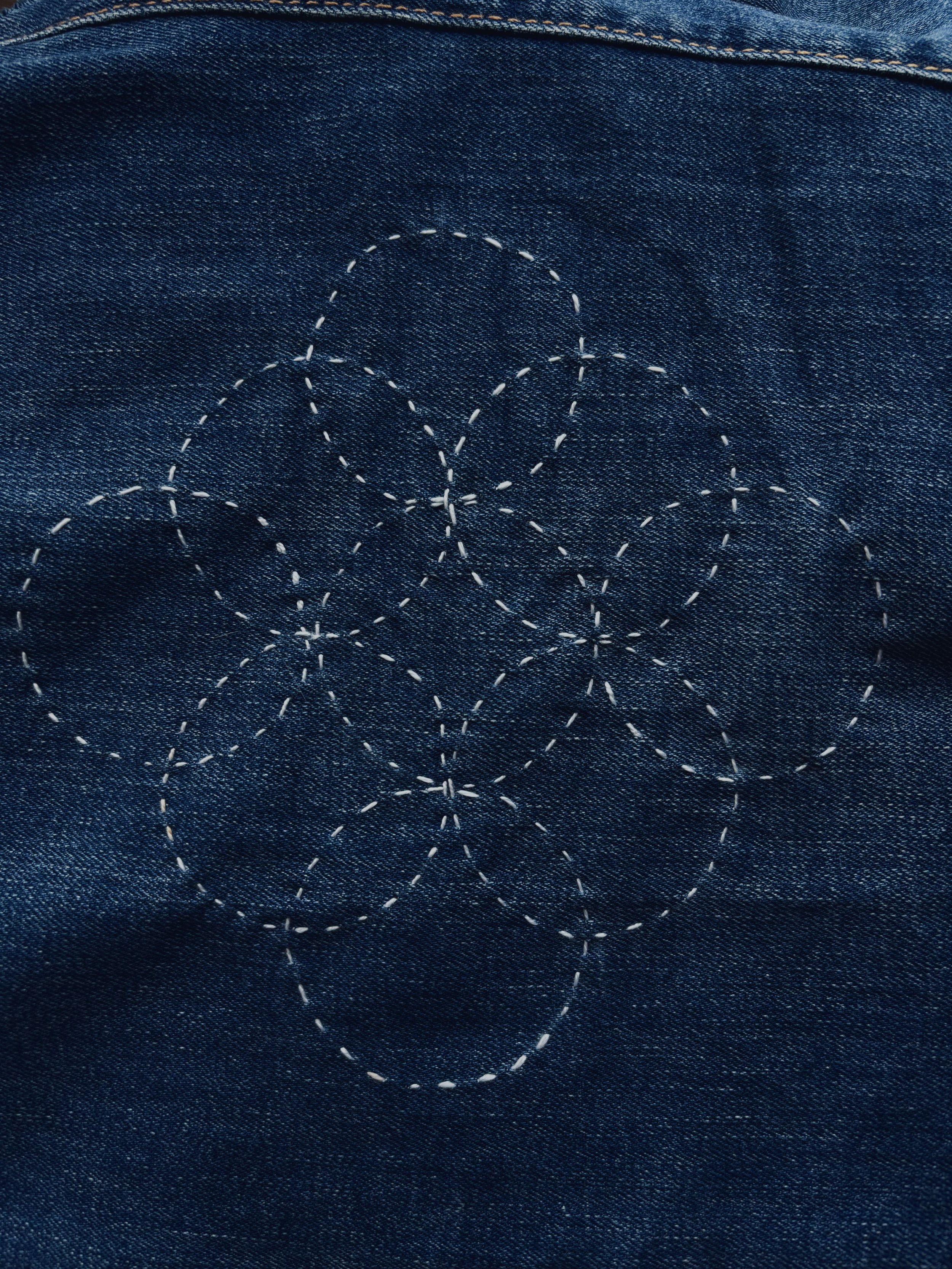Sashiko. Japanese stitching
Sashiko was one of the first up-cycling techniques that I have learnt. From the very beginning I liked how the white stitching looks on the blue fabric. After using it for some time I started researching and learning more about it, which only made me more and more curious. I decided to share sashiko in hope of making more people interested in it. It’s a really easy and beautiful technique with an interesting origin story.
Origin
Sashiko (刺し子, lit. 'little stabs') is a Japanese technique of embroidery or stitching that is said to have originated in the 17th century during the Edo period, even though garments with sashiko were found even from earlier eras (monk’s robe from 8th century). Because of the lack of resources and social division, fabric wasn’t cheap and available for everyone. Hierarchy brought restrictions on using garments and textiles within each class so instead of replacing, workers had to fix their worn out clothing that was later passed down through generations. Silk and cotton were reserved for a specific section of society and were very expensive; hemp was what the ordinary man wore, which was more prone to tearing. Given that, mending skills were a necessity to extend a lifespan of practical workwear.
19th Century Sashiko Jacket, The Metropolitan Museum of Art, New York
It was initially used by the lower class people like fishing or farming families to extend the life of their clothes. Workers would first add pieces of rugs onto the holes and then sew them with a simple running stitch to strengthen the fabric. In the late 19th century it became so popular that it evolved into a winter work for northern farming communities, done when it was too cold to grow crops. Sashiko was used on already patched fabrics as well as for adding patches to points of wear in used clothing. Other uses included layering over thin materials to create warmth or embroidering fireman's coats. Layers were added to the coats to better hold water that they were soaked into, before carrying out duties but it also served a decorative purpose with sashiko creating motives of dragons or mythological heroes.
Why the white thread on the blue fabric?
White cotton thread and indigo dyed fabric were the cheapest materials available to the working class in historical Japan. Work clothes had to last as long as possible and still be relatively cheap so thick hemp was the best option. Later some more decorative pieces also featured red stitching.
Sashiko thread had to be sturdier than those regularly used, so instead of being made out of strands it was made by twisting fine threads into one. And to simplify the sewing, needles with slightly bigger eyes were used. The special twist of the thread helps it to untwist when wet and twist back together while drying which eliminates the necessity of making knots, allowing both sides of the garment to be identical.
Techniques
The technique quickly spread over Japan which contributed to the creation of a few variations. Based on the available resources, geographical condition or weather in individual regions it had to fulfill a slightly different role. Here are the most known techniques.
Tsugaru Sashiko - comes from a wealthy, wet and mountainous region typically known for cultivation of rice. White thread was used to create vertical and horizontal lines on a deep indigo coloured fabric indicating the welfare of the region (darker color meant more dye had to be used to achieve it).
Nanbu Sashiko - located in northern Japan, this region's climate was dry making it harder to grow crops or rice. Clothing from this land uses a light blue ramie or hemp as a base with layered cotton on the shoulders and sides of the garment. Light blue thread constitutes a contrast on the dark indigo blue cotton.
Shimokita Sashiko - this peninsula region was mostly occupied by workers from the fishing industry, so their clothing had to be sturdier and therefore was less decorative.
Shonai Sashiko - garments featured distinct geometric patterns on a dark fabric made using white or blue thread, sewn from right to left and top to bottom.
Moyozashi - technique that uses long lines in running stitches.
Hitomezashi - technique which uses single stitches to create a grid.
For sashiko embroidery multiple patterns were being used. The best known are: overlapping flowers, waves, vertical and horizontal stripes, checks, diamonds, fish scales, crosses, intersecting rings, wind blowing grass of the field, arrow feather, fishing nets and circles.
Modern Sashiko
Over time sashiko became a tool used for decorating clothes, in modern times it’s a popular up-cycling technique for mending or decorating garments. It’s often used with many colorful fabrics, threads and patterns leaving the traditional Japanese colors behind. Born out of necessity this technique transformed into art used up to this day.
You can view my sashiko projects below!


